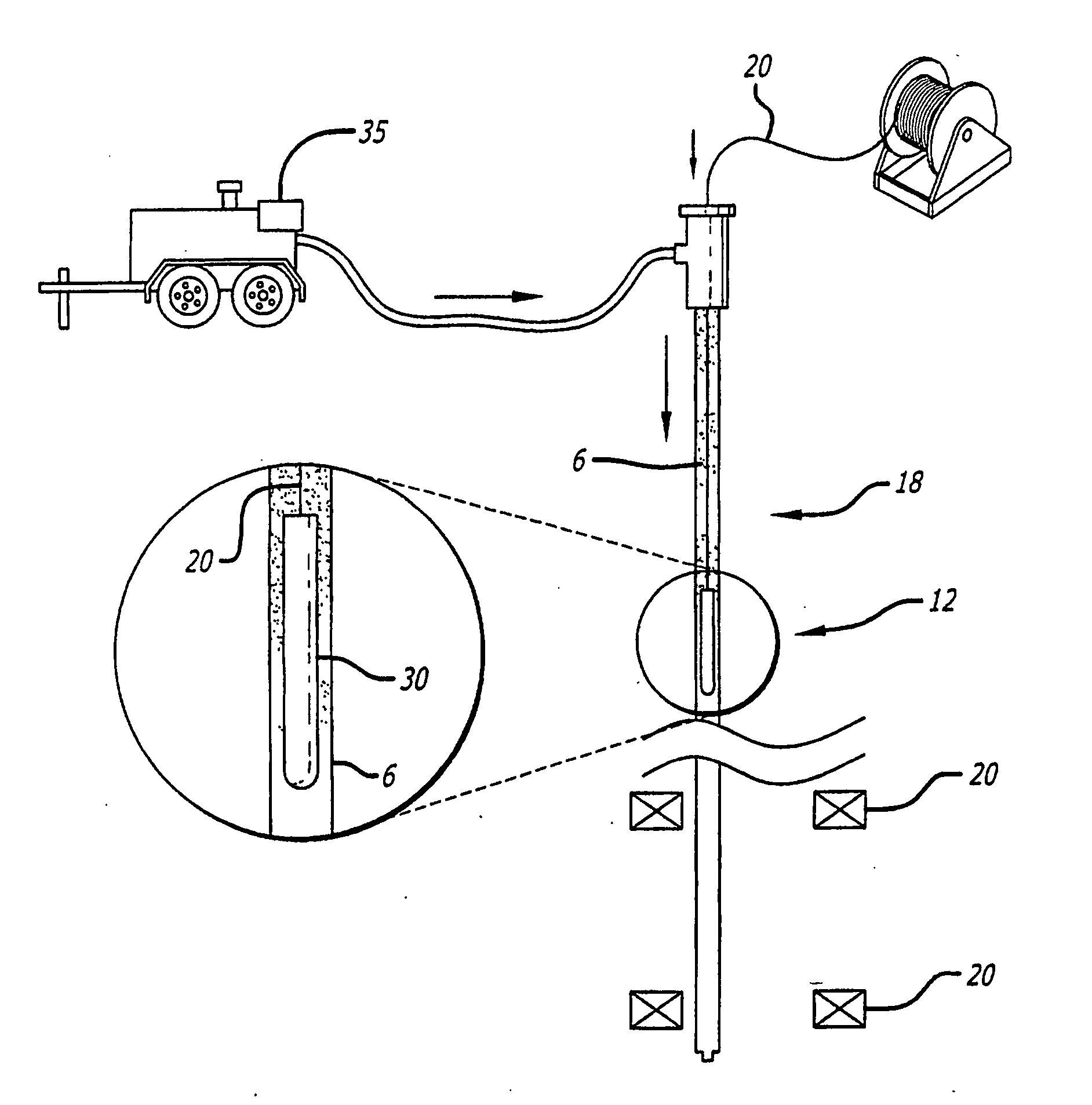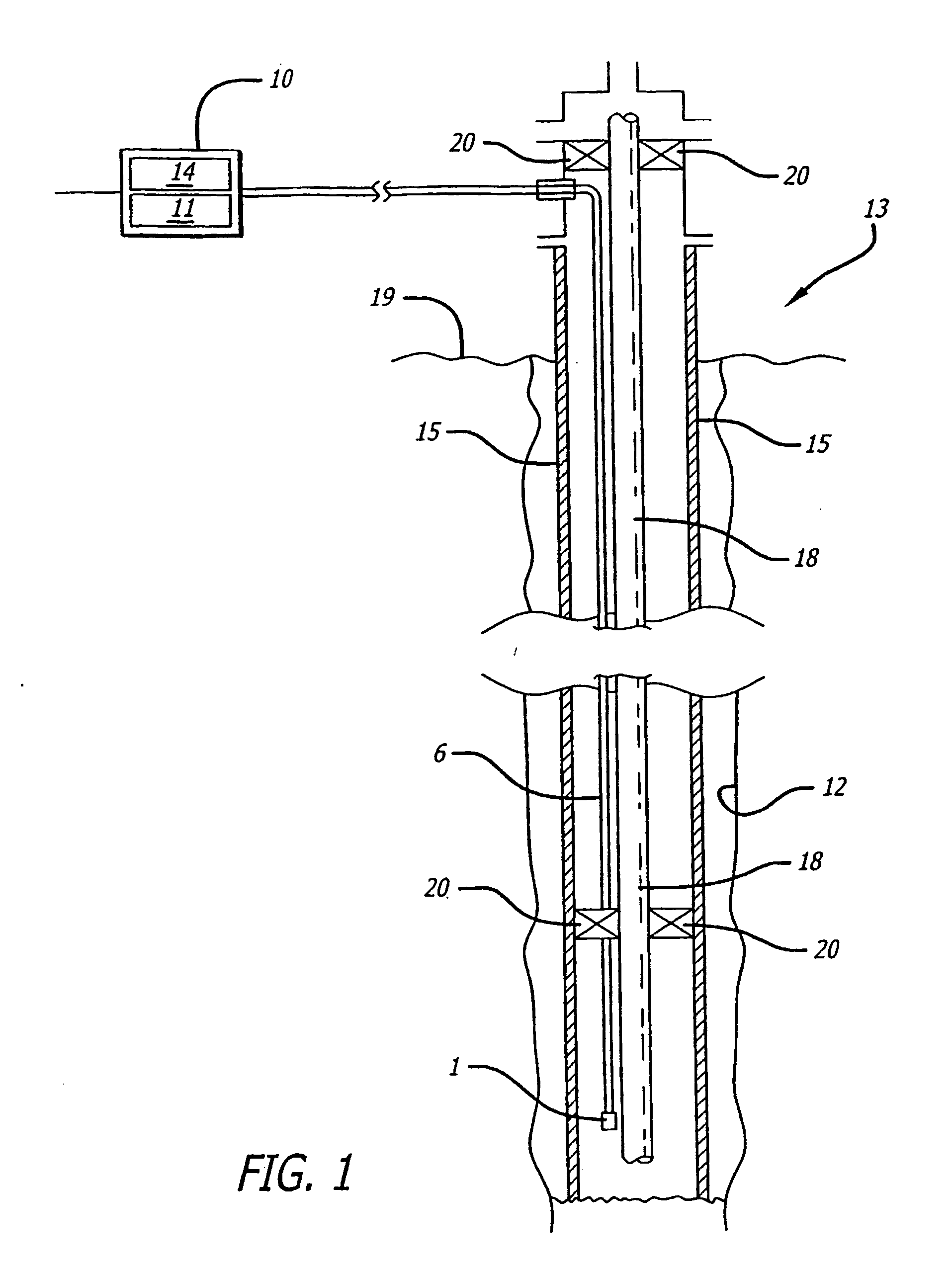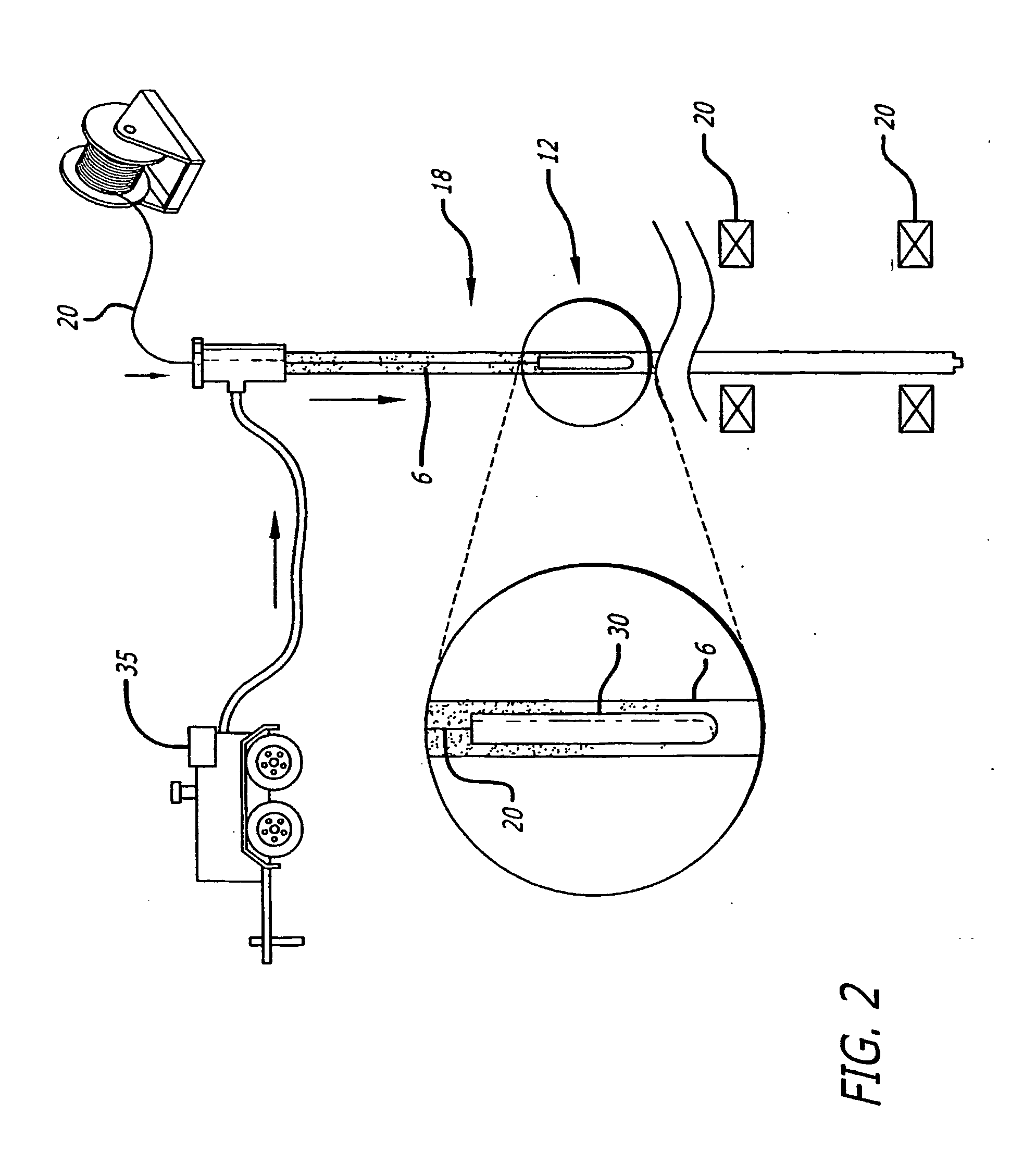System and method for deploying an optical fiber in a well
a technology of optical fiber and well, applied in the field of improved methods for deploying fiber optic sensors, can solve the problems of fiber optics not being sufficiently robust for installation, optical fiber itself is hair-thin and therefore relatively delicate, and the performance of fiber optics is not sufficient, so as to prevent water penetration
- Summary
- Abstract
- Description
- Claims
- Application Information
AI Technical Summary
Benefits of technology
Problems solved by technology
Method used
Image
Examples
Embodiment Construction
[0024] The present invention is well suited for use within a high temperature, hazardous environment. The device of the invention is suitable for use in a caustic, high temperature and pressure environment, such as the environment found downhole in an oil or gas well. Well bores range in depth from several hundred to several thousand feet. Consequently, hydrostatic pressure within a deep bore, in addition to high well head pressures caused by gas production, can be quite large and can reach and often exceed 70 MPa (approximately 10,000 pounds per square inch). Ambient well temperatures on the order of 200° C. (392° F.) are not uncommon. In addition, oil wells typically contain highly corrosive hydrogen sulfide and carbon dioxide gases. These harsh environmental conditions dictate that fiber optic cable and equipment must be enclosed within protective tubing or barriers.
[0025] Referring now to FIG. 1, a typical well bore having an instrumentation tubing placed therein is depicted. A...
PUM
 Login to View More
Login to View More Abstract
Description
Claims
Application Information
 Login to View More
Login to View More - R&D
- Intellectual Property
- Life Sciences
- Materials
- Tech Scout
- Unparalleled Data Quality
- Higher Quality Content
- 60% Fewer Hallucinations
Browse by: Latest US Patents, China's latest patents, Technical Efficacy Thesaurus, Application Domain, Technology Topic, Popular Technical Reports.
© 2025 PatSnap. All rights reserved.Legal|Privacy policy|Modern Slavery Act Transparency Statement|Sitemap|About US| Contact US: help@patsnap.com



